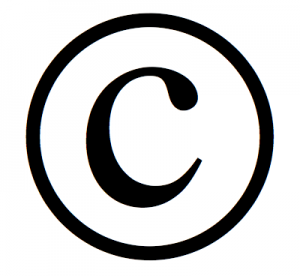The effusiveness surrounding the death of Prince, the pop music star otherwise known as Prince Rogers Nelson and the hieroglyph formerly known as Love Symbol #2, has included some asides about his litigiousness. In protecting his intellectual property, he was at least as aggressive as the Disney Corporation, and complained bitterly that his contract with Warner Music was a form of indentured servitude – making his case partly by performing with the word Slave inscribed on his cheek and by changing his name to that hieroglyph. The damage to Warner remains debatable, while the tactics forced thousands of innocent parties, including Prince’s admirers, to utter the mouthful “the artist formerly known as Prince” every time they wanted to “reference” the musician. But Prince’s most significant legal legacy could well be a lawsuit launched not by him, but by a small-town mom, against Prince’s efforts to protect his copyright.
In early 2007, Stephanie Lenz posted a 29-second video of her young children dancing in her kitchen in Gallitzin,  Pennsylvania, to a recording of Prince’s “Let’s Go Crazy.” The sound is terrible, the song hardly audible. However, Universal Music Corporation, the gatekeeper of the day for Prince’s published music, sent YouTube a “takedown notification,” a communication which apparently does not presage a physical attack but is a term of art these days for a demand that the purportedly offending posting be removed.
Pennsylvania, to a recording of Prince’s “Let’s Go Crazy.” The sound is terrible, the song hardly audible. However, Universal Music Corporation, the gatekeeper of the day for Prince’s published music, sent YouTube a “takedown notification,” a communication which apparently does not presage a physical attack but is a term of art these days for a demand that the purportedly offending posting be removed.
Lenz countered that the video was fair use, YouTube put it back up, and, backed by the Electronic Frontier Foundation,* Lenz sued Universal under that part of the U.S. Code comprising the Digital Millennium Copyright Act – specifically, the section which provides that, if you falsely allege copyright infringement (the section says “knowingly or materially misrepresents … that material or activity is infringing”), you are “liable for any damages.” She argued that the video’s use of Prince’s song was so minimal or incidental as to be “non-infringing,” as intellectual property law puts it.
Late last year, the U.S. Court of Appeals for the Ninth Circuit ruled that Lenz’s claim should proceed to trial, dismissing Universal’s motion to scrap it as being without substance. The court reaffirmed that, under U.S. law, “fair use” of copyrighted material means authorized use; it is not an exemption for an otherwise infringing use.
More significantly, the court added that, before so much as sending a takedown notice, let alone instigating more drastic measures such as suing for infringement, copyright holders are obliged to consider whether the use is fair at law. In Lenz’s case, that is, Universal should not have sent the takedown notification reflexively, without trying to work out, in good faith, whether her video made fair use of “Let’s Go Crazy.” Universal contends that its protocols for copyright oversight ensure such good faith enforcement.
So now a trial court must decide if that is the case with the “dancing baby video.” As the appeals court puts it, Lenz’s
claim boils down to a question of whether copyright holders have been abusing the extrajudicial takedown procedures provided for in the DMCA [(the digital copyright legislation)] by declining to first evaluate whether the content qualifies as fair use. We hold that the statute requires copyright holders to consider fair use before sending a takedown notification, and that failure to do so raises a triable issue as to whether the copyright holder formed a subjective good faith belief that the use was not authorized by law.
*A big thank you to my savvy friend and loyal blog follower Donna Jez for asking, “Who’s financing her case?”


I think this is a real great blog post.Much thanks again. eekckddagece
Thank you kindly.